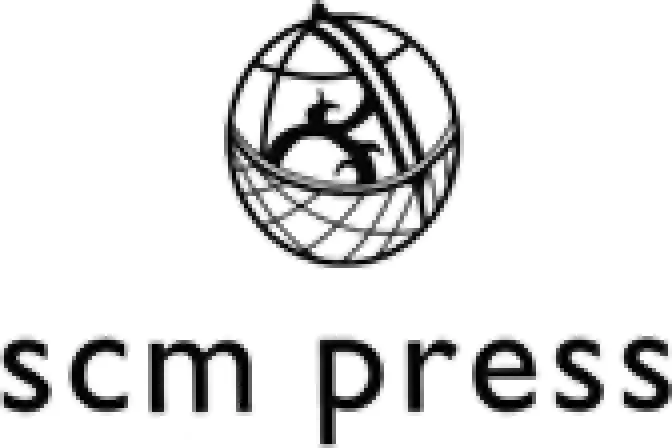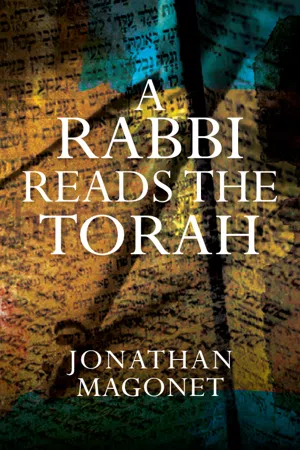Contents
Introduction
1 The Call to Abraham
2 Etiquette and Hospitality
3 Mourning for Sarah
4 The Servant’s Test
5 A Failure of Communication
6 ‘Surely God is in this Place’
7 Jacob’s Ladder
8 Jacob meets Esau
9 Rivalry among Brothers
10 Joseph and Pharaoh
11 Daily Miracles
12 Stubborn Pharaoh
13 Moses’ Secret Identity
14 Who is Jethro?
15 Choose Judges
16 Ten Commandments and Human Rights
17 The Rule of Law
18 Shekels, Swords and Altars
19The Absent Congregation
20 On Hats and Hijabs
21 Introducing Leviticus
22 Martyrs and Sacrifices
23 Mysteries of Sex and Death
24 Against Cruelty
25 The Small Print in the Contract
26 Holy Places
27 Spying out the Land
28 Rebelling against Moses
29 The Loss of Miriam
30 Listen to your Donkey
31 Coping with Fanatics
32 Letting Go of Power
33 The Daughters of Zelophehad
34 New Rituals for Women
35 Cause and Effect
36 Officers
37 When Tradition is Wrong
38 Judges
39 Promised Lands
40 From Holy to Profane
41 In a Culture of Fear
42 Facing Jerusalem
43 Anticipating Purim
44 Passover Past
45 The Wilderness Journey
46 The Black Fast (Tisha b’ Av)
47 Names of the New Year
48 The Sin of Scapegoating
49 The Day of Atonement and Sacrifice
50 The Day of Atonement and Fasting
51 Lessons of Sukkot (Tabernacles)
52 Prophet and Profit
Notes and References
Index of Torah Passages
Introduction
In theory, rabbis don’t give ‘sermons’!
Though, truth to tell, we have been influenced by the forms and terms of the wider society – including some of the worst aspects: A late-arriving congregant asks another who is just departing: ‘Has the rabbi finished his sermon?’ ‘Yes,’ comes the answer, ‘but he is still talking!’
Instead of a sermon, traditionally the rabbi, or indeed any lay member of the congregation, might give a derashah, a commentary on the particular passage from the Torah, the Five Books of Moses, that was being read on Shabbat morning that week in the synagogue. (Actually the Hebrew text is not ‘read’ but chanted according to a traditional set of melodies whose musical divisions also form a kind of commentary on the text.) Darash means to seek out, to search out, to delve into the many potential meanings within the biblical text itself, often aided by commentaries composed by rabbinic scholars over the past two thousand years.
The word ‘Torah’, from a root word ‘yarah’, meaning to shoot arrows at a target, is best translated as ‘teaching’, containing as it does both the narrative parts of the Bible and the legal aspects, everything that points the way towards a spiritual life. Though initially the term referred to the Five Books of Moses alone, understood traditionally as the direct revelation of God to Israel through Moses, Torah developed over time to include the rest of the Bible and indeed all the laws, teachings, opinions and personal examples derived from it. The derashah allows the rabbi to make his or her own contribution to the accumulated wisdom derived from the Torah.
The Five Books are divided into 54 units or parashiot so that the entire collection is covered in the course of a year – actually a leap year (one in which an extra month is added because the Jewish year is about one week shorter than the calendar year and has to catch up every few years). In non-leap years, of 50 weeks, some of the parashiot are joined together. Texts from Genesis are read in the autumn; from Exodus from the beginning of the year till about March; from Leviticus through to May; from Numbers till July, and from Deuteronomy over the summer months and into the autumn. The entire cycle of readings is completed in the autumn after the Jewish New Year at a festival called Simchat Torah, the rejoicing in the Torah, when we read the end of the Book of Deuteronomy and immediately begin again with Genesis. The cycle never ends, and with it the responsibility of rabbi and congregation together to seek out, to search for, the message embedded in the text by God with its lessons relevant for today.
Following the passage from the Torah in the synagogue there is a reading from the second division of the Hebrew Bible, the ‘prophets’, nevi’im. This prophetic reading is called the Haftarah, meaning conclusion. The passage for the week was chosen by the rabbis to echo some aspect of the Torah reading, but at various times of the year it is used instead to introduce or reflect upon the current Jewish festival. In addition, certain biblical books, the five megillot, scrolls, are read in conjunction with five key festivals and one fast during the course of the year: Esther at Purim in early spring; the Song of Songs at Pesach, Passover; Ruth at Shavuot, Pentecost; Lamentations on Tisha b’Av, the fast day during the summer commemorating the destruction of Solomon’s Temple by the Babylonians; Ecclesiastes during the autumn harvest festival of Sukkot. So all of these texts may be drawn upon for comment.
The various chapters in this book were not delivered in the conventional location of a synagogue on Shabbat morning. Instead, like those in From Autumn to Summer,1 they are a second collection of broadcasts given on German radio over a number of years during a Friday evening programme welcoming the Shabbat. Though ostensibly aimed at Jewish listeners, their real audience was a far broader one of people who were interested in matters Jewish. So the comments had to reflect some aspect of the Torah reading but also address a far wider community, as part of a broader commitment to interfaith dialogue. The 52 chapters in the book do not follow completely the cycle of the year, but may offer something for a personal weekly dip into the Bible. Some readings relating to specific festivals are to be found towards the end of the book.
Whether called a derashah or a sermon, it is a difficult art – to compress into a limited time enough information to explain the context within the Bible itself, and then translate it or open it up to address the expectations and needs of the congregation. Few rabbis can be sure that they have been faithful both to the Torah text itself and the listening congregation even once, let alone week after week. Perhaps the best one can hope for is the kind of positive response I experienced once at a civic service in a small synagogue in south London. At the end, the visiting non-Jewish mayor, said: ‘That wasn’t a sermon. You spoke to us!’
1
The Call to Abraham
Genesis 12
We begin the cycle of stories about Abraham, the founding figure of biblical faith. He is a most unlikely hero for such an extraordinary achievement. He is 75 years old. Nothing in the previous references to him in the Bible has suggested that he will be a religious pioneer. Indeed, so little information is given that the rabbis are forced to fill in his earlier life with stories that explain how he came to the belief in the one God.
This biblical silence encourages us to enquire about beginnings in general. For example, why does Abraham’s story begin here in Genesis 12? Or rather, what are we to make of the few tantalizing glimpses of his earlier life in the chapter before?
There is already something of a puzzle about the opening verses of our chapter. God speaks to Abram, as he is then known – only later will his name be changed to Abraham. God invites him to depart from his land, his family and his father’s house to go to a land that God will show him. God’s two words in Hebrew, lekh l’kha, are actually an invitation to go, not a command as many translations suggest. The two words mean ‘go to yourself’, ‘go for yourself’, or ‘go for your own sake’. This suggests that Abraham is free to accept this task or not. For God’s plans for humanity to have any meaning Abraham has to be a free agent. He must willingly choose to place his life and future in the hands of this God who calls to him.
Nothing is said about how Abraham considered the matter and came to the decision to go. Instead, we are simply told that Abraham went and took his extensive household with him. These include the servants he had acquired during his stay in a place called Haran. This is an important city on the main route from Abraham’s birthplace, Ur, on the Euphrates river, to Aleppo. But at this point something becomes a little unclear in the biblical story.
To understand the problem we have to go back to the previous chapter, Genesis 11. It introduces Abraham’s family and the cast list of people we will need to know something about as the story unfolds. Genesis 11 consists of a genealogy extending over ten generations from Shem, the son of Noah, down to Terach, the father of Abraham. We are told that Terach has three sons, Abraham, the oldest, Nahor and Haran. Haran dies, and his son Lot becomes Abraham’s ward. He will accompany Abraham on his journey and cause him considerable trouble in the future.
We learn that both Abraham and Nahor marry. Nahor has children who will also feature in later stories about Abraham’s family. But Abraham’s wife Sarah, we learn, is barren and cannot have children. So much for the background.
But next we learn that it is actually Terach, Abraham’s father, who originally set out on a journey away from his homeland, from the city of Ur. Terach’s destination is the Land of Canaan, the unnamed land that Abraham is invited by God to visit. Under the name, the land of Israel, it will forever be associated with Abraham and his descendants. Under Terach’s leadership the family only get as far as the city of Haran, and there it seems they become settled and remain. So here is the problem. Terach has already set out from the family homeland for the land of Canaan. So what is the meaning of God’s invitation to Abraham to leave his homeland, if he has already long since done so accompanying his father? In fact, whose initiative is the whole journey, Terach’s or Abraham’s? Was Terach also obeying a word from God? Was Abraham merely following a path established by his father?
One thing this apparent contradiction illustrates is the difficulty of pinning down where exactly something begins. Events always have a previous history. What factors might have led to the present moment? A chance encounter, a personal experience, an entire lifetime spent in a certain way, may all turn out to be the preparation for something entirely new and unexpected. Something out of the past, perhaps long forgotten, has had its quiet effect that only now bears fruit. Like the ripples that spread out when a stone is thrown into water, they will touch many other places and have effects that could never have been anticipated.
Our lives are part of a web of endlessly developing results of events from our past, only some of ...


